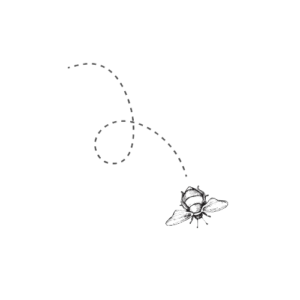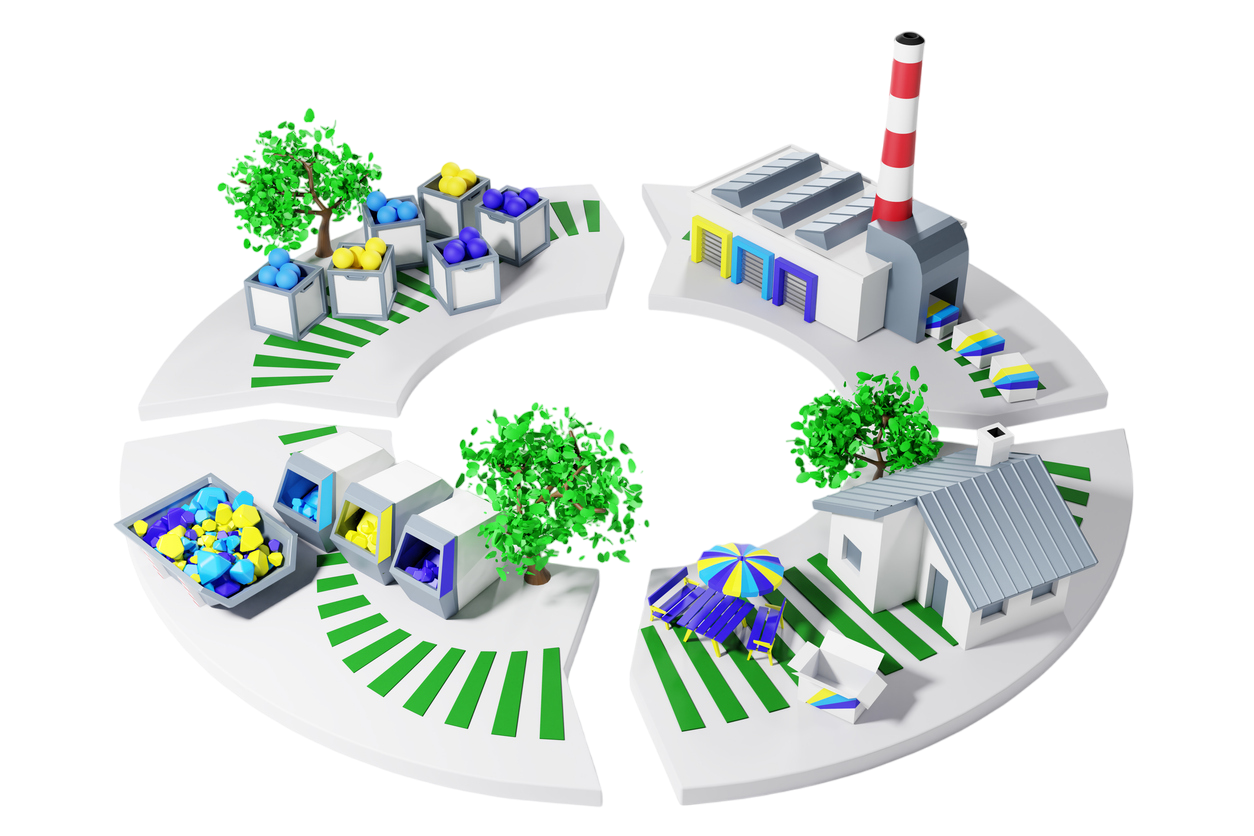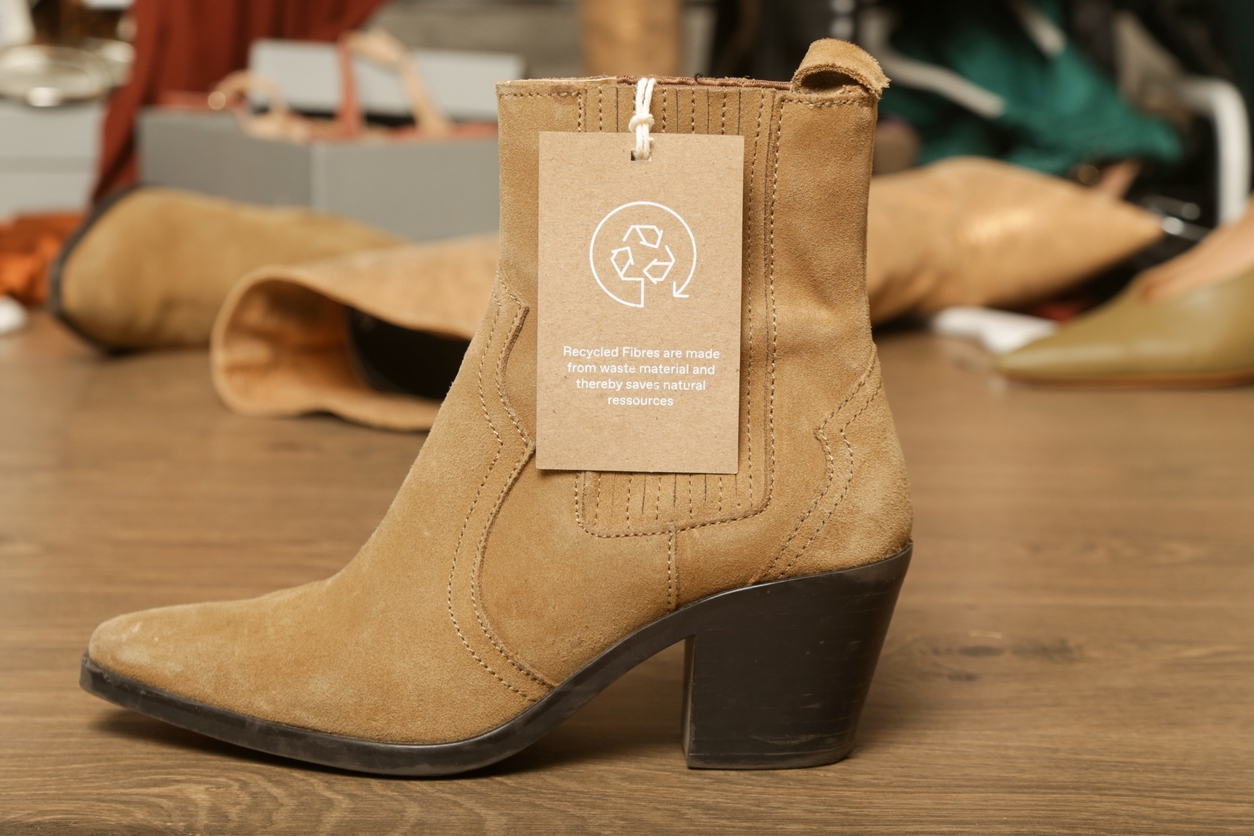Circular Economy & Innovation
Reading time: 7 min
Many of us struggle with the feeling that our current consumption patterns leave too much waste behind and wonder if there’s a more efficient, less destructive way to design products and services. You might have a closet overflowing with rarely used items or notice how quickly your office generates trash despite everyone’s best intentions. This article will show you how the concept of the circular economy—combined with everyday innovation—offers a transformative framework to reduce waste, extend product lifecycles, and keep valuable materials in use. By the end, you’ll see that even simple steps, like choosing refillable products or supporting companies that design for reuse, can spark positive change on a global scale.

The linear economic model that has guided much of modern development works in a straightforward but wasteful way: resources get extracted, turned into products, and, after use, often end up in landfills or incinerators. As landfills overflow and the planet’s raw materials dwindle, a shift in thinking becomes urgent. Enter the circular economy, a comprehensive approach that aims to eliminate waste, circulate materials at high value, and regenerate natural systems. Instead of discarding materials after their first use, a circular model looks for ways to reuse, recycle, or repurpose them—sometimes endlessly. These ideas aren’t purely theoretical: countless businesses, communities, and individuals are experimenting with product-as-a-service systems, creative reuse methods, and eco-friendly manufacturing processes that redefine ownership, consumption, and disposal. By reimagining the entire product lifecycle, from raw material extraction to eventual disposal, we can lessen the strain on our environment while fostering economic innovation.
“We cannot solve our problems with the same thinking we used when we created them.” – Albert Einstein (Theoretical Physicist)
Einstein’s words remind us that new paradigms—like the circular economy—offer a path forward precisely because they depart from the old, linear ways of producing and consuming. By adopting fresh perspectives, we can transform how we live, work, and create, ensuring that the resources we rely on today remain available for future generations tomorrow.
What You’ll Learn in This Article
In this in-depth exploration of Circular Economy & Innovation, you’ll discover:
How product-as-a-service models extend product lifecycles and shift mindsets away from single-use consumption.
Practical ways to engage in upcycling, resource recovery, and biomimicry to strengthen eco-friendly habits in your home or business.
Key Term: Circular Economy – An economic model designed to eliminate waste and keep products and materials in continual use, all while regenerating natural systems.

Circular economy concept illustration depicting a closed-loop reuse and recycling process for diverse products.
Product-as-a-Service Models
Rethinking Ownership for Longer Product Life
One of the core principles in a circular economy revolves around reimagining ownership. Instead of selling products outright, companies offer them as a service—where consumers pay for the benefits rather than the physical goods themselves. Picture a scenario in which you never actually buy a washing machine; instead, you pay a monthly fee for its use, including maintenance and repairs. This arrangement motivates manufacturers to design more durable, easily repairable products because the company retains ownership and is responsible for upkeep. By extending the product’s life, we reduce the need for constant manufacturing of new items, thus cutting down on raw material extraction and energy use.
Key Term: Product-as-a-Service (PaaS) – A business model in which customers pay for the functionality or performance of a product rather than owning it outright. The provider remains responsible for product maintenance, repair, and eventual recycling or repurposing.
Companies that adopt this model can also introduce upgrades more seamlessly, swapping out old components for new, improved ones. This fosters a culture of continuous innovation and efficiency, ensuring that technological advancements don’t automatically translate into piles of obsolete equipment. From electronics to furniture and even clothing, the product-as-a-service model holds the potential to transform how we consume goods by linking profitability directly to sustainable design and resource conservation.
Implementing PaaS in Daily Life
Although product-as-a-service might sound futuristic, it’s actually an emerging reality. Many streaming services, for instance, already embody the idea of paying for usage rather than owning media. If you’re looking to experiment with this model in your own life, consider subscription-based electronics, where you swap older devices for updated versions and the provider recycles the outdated hardware responsibly.
Pro Tip 1: If you’re a small business owner, explore leasing office equipment instead of purchasing it. This can save upfront costs and reduce electronic waste.
Pro Tip 2: Pay close attention to terms and conditions—responsible providers will detail how products are maintained, upgraded, and eventually recycled or refurbished.
Below are three practical ways to adopt or support product-as-a-service models:
Opt for Shared Transportation: Rather than buying a second car, consider car-sharing subscriptions or e-bike memberships.
Lease High-End Gadgets: For cameras, laptops, or other tech, look for companies that lease devices and handle future upgrades.
Encourage Service-Oriented Rental Shops: Support local businesses that rent tools and equipment for home projects, thereby lessening the need for everyone to own seldom-used items.
Upcycling & Creative Reuse
Breathing New Life into Old Materials
Upcycling and creative reuse are at the heart of extending an item’s functional life in a resource-smart way. Unlike recycling, which often breaks materials down before reforming them, upcycling adds value to discarded goods without requiring as much energy or altering the underlying materials. It’s a creative process that can transform old t-shirts into quilts, glass jars into stylish planters, or wooden pallets into chic coffee tables.
Key Term: Upcycling – The process of converting waste materials or unwanted products into new items of equal or greater value, often boosting aesthetics or utility in the process.
This approach injects an element of fun and individuality into sustainability. When you decorate a space with upcycled furniture or wear upcycled clothing, you’re showcasing unique pieces that carry a story behind them. Large brands are also jumping on board, releasing special “limited edition” runs featuring deadstock fabrics or reclaimed metals. By turning potential trash into treasure, we divert materials from landfills and reduce the demand for virgin resources. Moreover, upcycling can spark local micro-industries, encouraging artisans and DIY enthusiasts to pioneer new uses for old objects.
Practical Upcycling Steps
It’s easy to start small with upcycling—maybe you’ll repurpose a jam jar as a pen holder or create a tote bag from an old curtain. As you build confidence, you can take on more ambitious projects like refurbishing furniture or stitching custom accessories from vintage textiles.
Pro Tip 1: Join online communities or workshops that focus on DIY upcycling. You’ll find a wealth of ideas and tutorials to spark your creativity.
Pro Tip 2: Keep an eye out for local thrift shops or “freecycle” events where you might discover cost-effective materials perfect for upcycling projects.
Below are three ways to explore upcycling and creative reuse in your daily life:
Repurpose Household Items: Turn empty glass bottles into decorative vases or candle holders.
Give a Makeover to Old Furniture: Refresh an outdated chair or table with a new coat of eco-friendly paint or upholstery.
Host Clothing Swap Parties: Invite friends to exchange gently used clothing and brainstorm upcycling ideas, reducing the need for new apparel purchases.
Circular Manufacturing
Designing Products for Longevity and Reuse
Circular manufacturing goes beyond making a few sustainable tweaks—this approach demands that companies re-envision the entire product lifecycle from design to end-of-life. Businesses adopting circular manufacturing prioritize materials that can be reused, remanufactured, or recycled multiple times without losing quality. They aim for modular designs, making it simpler to replace broken parts, upgrade core components, and keep products in circulation far longer than their linear counterparts. By doing so, manufacturers slash carbon emissions, reduce waste, and demonstrate leadership in a market that increasingly rewards environmental responsibility.

High-tech circular manufacturing facility showcasing modular production lines for sustainable product life cycles.
Key Term: Modular Design – A product design method where components are standardized and interchangeable, enabling easy repair, customization, or upgrade without discarding the entire product.
Circular manufacturing also challenges the notion that eco-friendly practices must be costlier. When products remain in use longer and materials can be reclaimed, companies can often save on raw material expenses. Moreover, consumers may form tighter brand loyalty when they see a company genuinely committed to long-term usability and environmental stewardship.
Getting Informed and Supporting Circular Brands
As consumers, we can steer industries toward circular manufacturing by spending our money on brands that uphold these values. Check whether companies provide details about product composition, repair options, and recycling programs. Alternatively, some businesses offer “take-back” initiatives, inviting customers to return old goods for responsible disposal or refurbishment.
Pro Tip 1: Look for labels or certifications (such as Cradle to Cradle) that indicate a product has been designed with circular principles in mind.
Pro Tip 2: Read a product’s warranty or service agreement carefully—robust coverage often signals that a manufacturer believes in its product’s longevity.
Below are three suggestions to foster circular manufacturing practices:
Request Repair Guides: Let companies know you value easily accessible manuals for replacing worn-out components.
Seek Modularity: Opt for appliances or devices with easily swappable parts to extend their lifespan.
Donate to Circular Programs: Support organizations and nonprofits that help businesses transition to a circular economy.
Resource Recovery & Management
Transforming Waste into Valuable Assets
Resource recovery is a vital component of the circular economy, focusing on extracting the maximum possible value from items or materials we traditionally label as “waste.” Think of food scraps transformed into nutrient-rich compost, old electronics carefully dismantled for reusable metals, or industrial byproducts repurposed in other processes. By implementing robust resource recovery, we minimize what ends up in landfills and incinerators. This not only decreases environmental harm but also captures economic value that might otherwise be lost.
Key Term: Industrial Symbiosis – A system where the waste or byproduct of one industry becomes the raw material for another, reducing the consumption of virgin materials and lowering overall environmental impact.
Cities worldwide are experimenting with resource recovery at scale— from capturing methane from landfills to fueling local energy grids, to turning recycled glass into new building materials. For smaller communities or individual households, resource management might look like well-organized recycling, composting programs, and consistent efforts to keep hazardous substances out of the general waste stream. Ultimately, effective resource recovery underscores that even the humblest waste product can become a building block for something else.
Everyday Resource Recovery Tactics
Resource recovery doesn’t require advanced machinery; it often begins with thoughtful sorting. Separate food waste, recyclables, and hazardous materials so they can be processed or reused more efficiently. Many municipalities provide guidelines on how to prepare items for recycling—removing labels, rinsing containers, or bundling cardboard—to ensure materials remain uncontaminated and valuable.
Pro Tip 1: Seek out e-waste collection points for electronics, where valuable metals and rare earth elements can be recovered.
Pro Tip 2: For biodegradable waste, try composting at home if you have the space; you’ll end up with nutrient-rich soil for your garden or potted plants.
Below are three immediate actions to improve resource recovery at home or work:
Set Up Separate Bins: Keep recyclables and compostables in distinct containers to reduce contamination.
Repurpose Organic Scraps: If you can’t compost onsite, find a local composting facility or community garden that accepts organic waste.
Avoid Wish-Cycling: Only recycle items confirmed acceptable by your local center—otherwise, they may end up in the trash anyway.
Biomimicry & Design Thinking
Learning from Nature’s Time-Tested Strategies
Biomimicry is a design philosophy that looks to nature’s billions of years of evolution for inspiration. Instead of forcing unnatural solutions, innovators ask: “How does nature solve this problem?” This approach sparks creativity that is both efficient and sustainable, whether it’s designing wind turbine blades modeled after whale flippers or creating building ventilation systems that mimic termite mounds’ cooling methods. By emulating nature’s proven strategies, we can minimize waste, reduce resource consumption, and harmonize human activities with the surrounding environment.
Key Term: Biomimicry – The practice of studying and replicating the designs and processes found in nature to solve human challenges, often resulting in sustainable, resource-efficient innovations.
Design thinking complements biomimicry by encouraging us to empathize with both users and the environment, prototype solutions quickly, and refine concepts based on feedback. When we combine design thinking with biomimicry, we unlock eco-friendly creations that resonate with how ecosystems naturally function.
Integrating Biomimetic Principles
You don’t need to be a product engineer to engage with biomimicry—this mindset can guide everything from neighborhood planning to everyday problem-solving. For instance, you might arrange your garden to optimize natural airflow or learn from the water-saving tactics of desert plants. Many schools and universities also encourage biomimicry projects, helping students grasp how design can merge seamlessly with sustainability.
Pro Tip 1: Conduct a “biologize” session: identify the core function you need (like cooling, filtration, or structural support), then see how nature accomplishes it in the local environment.
Pro Tip 2: Look up existing biomimicry databases or labs for inspiration—many successful designs are open-source, providing valuable knowledge for your projects.
Incorporate these three steps into your daily habits or business practices:
Observe Local Ecosystems: Notice how native flora or fauna thrive, and brainstorm how to replicate those strategies.
Prototype with Natural Materials: Explore biodegradable or regenerative materials, reducing harm and embracing cyclical lifespans.
Share Findings: Discuss your biomimicry successes with friends and colleagues, inspiring others to adopt nature-inspired solutions.
Key Takeaways & Actionable Steps
Here’s a concise list of concrete tips drawn from each article section, arranged from highest-impact steps to lower-impact measures. Start with the top actions to make the most significant difference in adopting circular economy and innovation practices:
Resource Recovery & Management
Separate Waste Streams: Establish clear bins for recyclables, compostables, and hazardous materials.
E-Waste Strategies: Seek out electronics recycling points to reclaim valuable metals.
Composting Culture: Commit to turning organic scraps into nutrient-rich soil rather than sending them to landfills.
Circular Manufacturing
Purchase Modularity: Favor brands that design products for easy repair or part replacements.
Support Take-Back Schemes: Choose companies offering return or refurbish programs.
Demand Transparent Lifespans: Ask for information on product durability and potential upgrades.
Upcycling & Creative Reuse
DIY Projects: Transform jars, bottles, and pallets into new household items.
Creative Clothing Solutions: Repair or repurpose apparel to reduce fast-fashion waste.
Community Swaps: Host or join events that facilitate item exchanges and spark fresh reuse ideas.
Product-as-a-Service Models
Shared Services: Opt for car-sharing or subscription-based electronics.
Lease Over Buy: When feasible, lease office equipment or specialized tools.
Expand Rental Culture: Encourage local businesses to offer service-oriented rentals to reduce overconsumption.
Biomimicry & Design Thinking
Nature-Inspired Solutions: Observe local ecosystems for potential design cues.
Prototype Sustainably: Incorporate renewable or biodegradable materials into projects.
Educate and Inspire: Share biomimetic insights with peers, fostering innovative eco-friendly designs.
Summary
We’ve delved into diverse facets of the circular economy, exploring product-as-a-service systems, upcycling, resource recovery, biomimicry, and more. Each concept reframes how we produce, consume, and discard goods, illustrating that small, steady changes—in both our daily choices and larger business models—can have a profound impact on sustainability. By adopting practices such as composting, leasing products instead of owning, and designing for longevity, we nurture an economic environment that prizes efficiency, creativity, and ecological balance.
We hope you feel empowered by these ideas. There’s always more to learn and more ways to refine your lifestyle or business to align with circular principles. Sign up for our newsletter to receive weekly updates, tips, and real-world success stories. Ready for further insight into building a sustainable future? Check out our next article, “Green Parenting & Eco-Education” where we’ll examine how fostering eco-conscious habits among children and young adults paves the way for enduring environmental stewardship.

HANDS ON SUSTAINABILTY –
Microhabit Building Mini Course
Take the next step with our free, 8-Week Email Mini Course, offering hands-on guides, tips, and tricks to make meaningful progress on your journey to more sustainable living.
By the end of this mini course you will be able to:
✤ Plant the seeds of eco-conscious living with small, daily changes that reduce waste and conserve resources.
✤ Nurture these new habits to form a consistent, planet-friendly routine that fits seamlessly into your everyday life.
✤ Develop deeper roots by integrating sustainable choices so thoroughly that they become second nature, bringing lasting benefits for you and the environment.
✤ Grow your influence by sharing practical insights with friends, family, and colleagues, inspiring a collective shift toward greener choices.
[mc4wp_form id=253]
By clicking “Subscribe” you agree to our Terms & Conditions and Privacy Policy.
